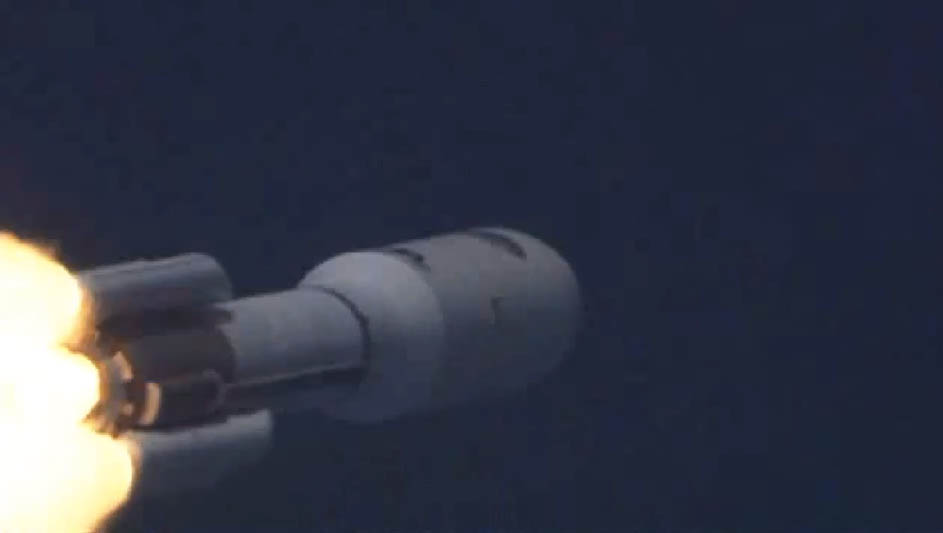Climate Change Advantage: Better Wine Quality
Mar 23, 2016
But scientists have warned that if the trend continues too long, the current run of outstanding grape harvests could end. In climate change, temperatures are rising in non-drought years and that may upset the traditional relationship.
Ben Affleck wants to prove he's just another Batman
Mar 22, 2016
Be proactive - Use the "Flag as Inappropriate" link at the upper right corner of each comment to let us know of abusive posts. When he learns to differentiate between the fact that it's not, that I'm not really getting beat up on camera".
Bill Clinton to campaign for Hillary Clinton in Washington
Mar 22, 2016
Bill Clinton will speak at Spokane Falls Community College Monday afternoon and at Clark College in Vancouver Monday evening. His visit will be on the heels of a swing through Spokane by Clinton's rival for the nomination, Vermont Sen.
Obama, Castro come face to face in historic meeting in Cuba
Mar 22, 2016
The issue of human rights is the biggest disagreement between the USA and Cuba, given Cuba's detention of political prisoners. The president is also scheduled to attend a baseball game this week between the Tampa Bay Rays and the Cuban national team.
Republican women watching wild GOP race
Mar 22, 2016
House Speaker Paul Ryan , a Wisconsin Republican, has been critical of Trump's rhetoric and divisive political tone. Trump , who has never held elected office, is now leading the race for the Republican presidential nomination.
Obama shakes hands with Raul Castro in historic meeting
Mar 22, 2016
But major differences remain - including a 54-year-old USA economic embargo against Cuba. The opening ended decades of U.S. efforts to force Cuba to change through isolation.
Wall Street Closes at 2016 High as Fed Leaves Interest Rates Unchanged
Mar 22, 2016
The US central bank noted, however, that the United States continues to face risks from an uncertain global economy. Shanghai's composite index slipped 0.2 percent at 2,862.90, but South Korea's KOSPI added 1.2 percent to 1,997.32.
Minnesota Wild extend winning run over the Chicago Blackhawks
Mar 22, 2016
Minnesota (34-28-11) beat the Blackhawks for the sixth consecutive regular-season game, including a 4-0-0 mark this season. In the third period, Panarin was called for a roughing penalty after dragging down Wild defenseman Matt Dumba.
Questions We Have After This Week's Sad, Confusing 'The Walking Dead'
Mar 22, 2016
Daryl , Rosita and Denise drive in a truck on their way to the apothecary when they come upon a fallen tree across the road . Eugene spots Abraham hiding behind some barrels. "I never even imagined that as an actor you could have that experience".
Cleveland Browns reportedly working on signing QB Robert Griffin III
Mar 22, 2016
The post Browns "not actively engaged" in Kaepernick trade talks with 49ers appeared first on 49ers Hot Read . All of that being said, expect to hear plenty more news and rumors come out about the Browns and Griffin.
Henry Cavill walks around Times Square as Superman, going unnoticed
Mar 22, 2016
And we can't help but think that rather a lot of that has something to do with Henry's involvement (sorry Ben Affleck). He recently revealed that it "really gets his goat" when people hit on him in front of his girlfriend Tara King.
Ben Simmons declares for the 2016 NBA Draft like everyone expected
Mar 22, 2016
ESPN was the first outlet to report that Simmons was leaving the college game behind. Yet he wasn't immune to criticism.
Apple CEO Addresses Encryption Battle with FBI at Product Launch Event
Mar 22, 2016
One area where the specs differ is that the 9.7-inch Pro will actually have better cameras than the 12.9-inch Pro. It kicked off when the event, meant to showcase new products, kicked off with nothing about new products.
Easter week services, celebrations
Mar 22, 2016
Sunday Worship Service is at 10 a.m. "Why Did Jesus Die?" is the theme of the Good Friday Communion service on March 25 at 7 p.m. An Easter Sunrise Service at the covered shelter in Crane Park will begin at 6:30 a.m. and run until approximately 9 a.m.
Mall Easter bunny, father scuffle after child slips
Mar 22, 2016
Video snapped by nearby shoppers shows the half-dressed bunny throwing multiple punches at a man in a brown shirt. The bunny's actor said the father verbally and physically attacked him after the young girl fell.


